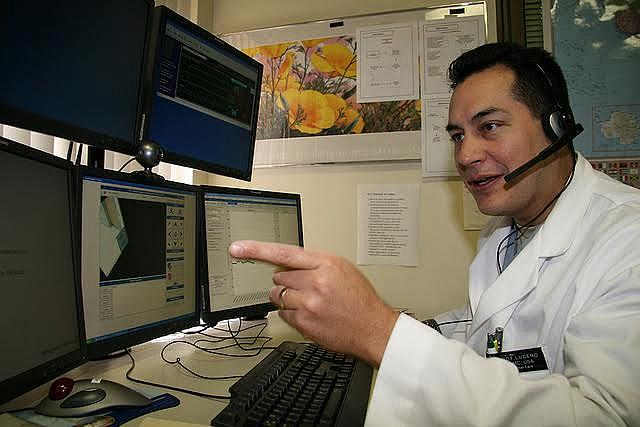Amid poor access and hospital closures, is telemedicine the answer to rural health?

Rural hospitals across the nation have been closing at a noticeable, even alarming, rate. Since 2010, there has been on average one closure per month. Three of these have been in California’s Central Valley.
In exploring the numbers for my 2016 California Fellowship project, I intend to focus on rural residents and how they respond when a local hospital closes it doors or else merges with another regional hospital. In doing some preliminary reporting, I’ve heard from patients who have had to drive an hour in the middle of the night through dense fog to reach the nearest emergency room. This story will include the experiences of residents in and around Kingsburg, Corcoran, and Southern Inyo County, three areas where the local hospital is no longer open for business.
Another story will be a broader look at what has happened to rural health care in California in the past decade, and specifically, what the long-term economic consequences might be for communities that remain without a hospital. Between 2006 and 2009, hospitals in Dos Palos, Chowchilla, Sonora, Greenville and Yountville closed. Peggy Miller, vice president for rural health care at the California Hospital Association, observes that when a rural hospital closes, it affects not only patients, but also the community’s overall economy. In a 2006 study “The Effect of Rural Hospital Closures on Community Economic Health,” in the journal Health Services Research, the authors conclude that a rural hospital’s closure “decreases the economic well-being of the community and likely places the local economy in a downward cycle that may be very difficult to recover from.” They also observe that it is important “to ask whether hospitals that close because of low volumes are necessary providers that simply cannot compete in a market system because they serve a small population base, or are providers that are not utilized by the communities and so are appropriately closed.”
Reflecting on this, Cristina Miller, an economist at the USDA Economic Research Service, commented that it would be compelling to learn (in part from community leaders and Chamber of Commerce officials) what happened to the communities following the closures: Why did they close (low daily census, patient mix, management, quality of care, age of facility and equipment)? What did the communities do to prevent the closures? What happened to access to care? Was a rural clinic opened? What happened to mortality in emergency care situations if the distance to the nearest hospital was too far? Did other firms close? Did people move out of the area because of it? Did it affect housing values, schools or other public goods? What are community leaders doing to attract new residents, firms, and health care providers? My story will seek answers to these questions.
A third story will reflect studies on how cancer patients living in rural, isolated areas face an extra hurdle in obtaining therapies that are lengthy, frequent and oftentimes debilitating. These patients have largely been overlooked by the media and policymakers. In September 2015, the prominent journal Oncology published the first clinical overview of the problem. The study, “Challenges of Rural Cancer Care in the United States,” notes innovative methods for treating cancer patients in remote areas, including outreach clinics, virtual tumor boards, and physician retention programs. The study points to the looming “projected increase in demand for cancer care due to the aging population” and mirrors an American Cancer Society study, published in January 2016, that projected 173,200 new cancer cases in California this year.
Relying on the Cancer Registry of Greater California, which includes cancer patients in 48 out of California’s 58 counties, and its director, Prof. Rosemary D. Cress, I will include discussion of mortality rates for rural patients, and how these compare with their urban counterparts. The burden of accessing screening and treatment centers remains a significant problem for the former group. My story will explore this issue, including a look at Shasta Community Health Center in Redding, which completed its $10 million, 20,000-square-foot expansion in November, and yet struggles to staff critical disciplines such as neurology, oncology and nephrology.
Lastly, I will spotlight a key area of innovation for rural patients and health care practitioners: telemedicine. The basis for this story will be the firm Telemed2u, which serves 260 patients in rural California and offers real time audio video conferencing. Dr. Javaeed Siddiqui, Telemed2u’s chief medical officer and the former medical director of the California Institute for Science and Innovation at UC Berkeley, says telemedicine increases access to care while decreasing per capita costs. His 23 specialists review lab work and develop treatment plans, including for diabetics to whom the closest specialist is a three-hour drive away. My story will examine whether telemedicine is really the elixir its proponents hope and claim it could be.
[Photo by MilitaryHealth via Flickr.]

